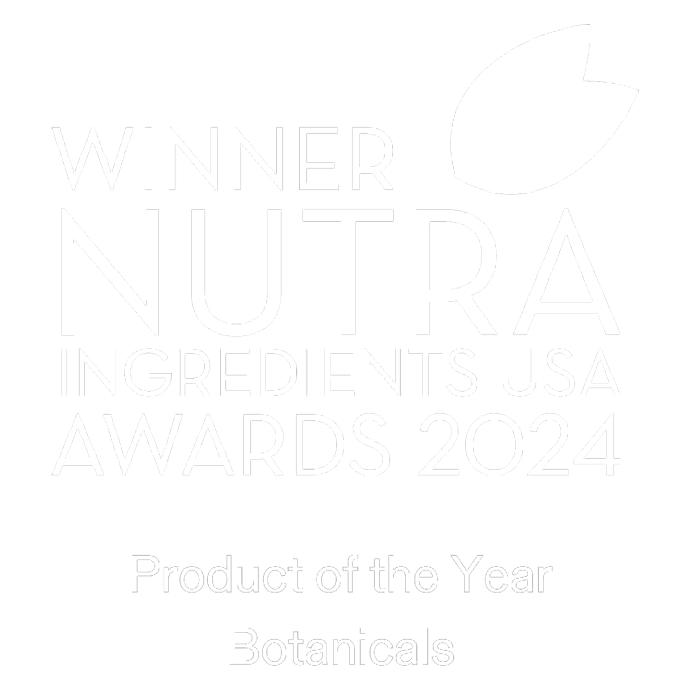In recent years there has been a surge in the discussions around perimenopause/menopause and how the fluctuation and eventual depletion of sex hormones contribute to changes in appetite and body morphology. However, hormonal fluctuation is also a characteristic of women who are menstruating and should be considered in those dealing with changes in appetite and food choices during their cycle.
Hormonal effects on appetite during the menstrual cycle
During the first part of the menstrual cycle, the follicular phase, estradiol levels increase before dropping at ovulation and then slightly increasing during the luteal phase (Figure 1).1 Progesterone levels are low during the follicular phase, but increase well above estradiol levels, further opposing estrogenic effects.1 Many studies have confirmed the changes in appetite that occur during the menstrual cycle are hormone-driven, because their function extends beyond fertility to include energy expenditure and appetite effects: estrogen is appetite suppressing, while progesterone stimulates the appetite.1 Estradiol acts centrally in hypothalamic nuclei to inhibit feeding and to stimulate brown adipose tissue thermogenesis (thereby increasing energy expenditure).2 Progesterone stimulates the appetite centrally and also counteracts estrogen’s appetite-suppressing effects, especially during the luteal phase of the menstrual cycle. Progesterone has also been shown to increase energy expenditure,3 which may further contribute to an increase in appetite.
The outcome of these changes is that appetite is relatively reduced around ovulation and then increases in the luteal part of the menstrual cycle.1,4 In addition, other factors also play a role in changes in appetite: as estradiol and progesterone increase post-ovulation, serotonin availability within the brain decreases and cortisol rises, causing metabolic stimulation—both of which increase appetite. Cravings for fats and carbohydrates are influenced by high cortisol levels and for carbohydrates by low serotonin levels.5 Decreased insulin sensitivity associated with lower estradiol levels may also play a role in fluctuations in appetite. Figure 1 maps the change in food cravings with hormone levels during the menstrual cycle.
Figure 1: Proposed relationship of food cravings to hormone levels during the menstrual cycle.1

The consequence of increased appetite pre-menses
The increase in appetite in the luteal phase of the menstrual cycle is not inconsequential. In a meta-analysis of 19 studies of food intake across the menstrual cycle, the average increase in food intake was 239 kcal/day (1 MJ/day) during the luteal phase compared to the follicular phase, while the peak increase was an additional 597 kcal/day calories (2.5 MJ).4 A recent meta-analysis of 15 studies produced similar results of an average 168 kcal/day increase in the luteal phase.6 Furthermore, multiple researchers have documented that the increase is typically in fat-and-carbohydrate-rich foods such as chocolates, cakes, pastry and ice-cream, though it’s often been misdescribed as increased carbohydrate cravings, ignoring the fat component of such foods.4 Indeed, 29% reported chocolate craving related to their menses in a survey of 97 college-aged women.7
These cravings typically occur just before menses and continue into the first days of it.1 Hallam et al cited research that during the luteal phase women experience 57% more cravings than the early follicular phase of their menstrual cycle, and that 74% of women report food cravings in the 7 days pre-menses versus 27% after menses.1
Despite the increased food intake that occurs prior to and in the first days of menstruation, weight gain that may occur is temporary. Indeed, a study of various body composition metrics found that while there was a 0.5 kg increase in weight during menstruation this was mostly due to extracellular fluid retention.8
Premenstrual syndrome makes cravings worse
Premenstrual syndrome (PMS) includes psychological, physical and behavioral symptoms with food cravings and overeating falling into the latter category.9 In addition, psychological symptoms such as irritability and mood swings may also drive the desire to seek comfort foods such as fats and carbohydrates (the latter of which increases tryptophan, a precursor of serotonin).
PMS symptoms are experienced by up to 85% of women and are incapacitating in 2–10%.9 PMS’s etiology is related to multiple factors, such as enhanced sensitivity to progesterone levels, changes in serotonin sensitivity, prostaglandin deficiencies, and genetics.9 Whatever the cause, it’s reported to impact energy intake pre-menses. Women with severe PMS ate an average of 500 kcal a day more during the late luteal phase.10 Carbohydrates consumption increased by 24% from meals and by 43% from snacks. Fat consumption rose with calorie intake (as it was a fixed constituent of test foods).10
PMS is more likely with increasing BMI
Menstrual cycle appetite changes—despite being more pronounced in those with PMS—do not appear to directly impact long-term weight gain; however, PMS is more likely in overweight or obese women. There is a linear relationship between BMI and risk of PMS, as determined in the Nurses’ Health Study, with a 3% increase in PMS with every 1 kg/m² gain in BMI.11 Those with a BMI ≥27.5 kg/m² had significantly higher risks of PMS than those with a BMI ≤20 mg/kg².11 In addition, women with higher BMI scores were more likely to have specific symptoms such as swelling of extremities, backache and abdominal cramping.11 Thus, maintaining a healthy BMI is likely important in preventing the occurrence of PMS.11
Managing menstrual cycle appetite changes with Calocurb®
With the increasing global prevalence of overweight and obesity, PMS is likely to also increase in prevalence. With that comes higher cravings and an even bigger calorie intake pre- and during menses. In order to manage such behavior, it would be ideal to recommend a product that could be taken just when needed during that part of the menstrual cycle. One such product is Calocurb®, an all-natural, plant-based supplement. The active ingredient is Amarasate®, an extract of bitter hops flowers grown in New Zealand and backed by US$18.5M research over 15 years. Amarasate stimulates bitter taste receptors present throughout the gut, which release glycogen-like peptide-1 (GLP-1) in response. Taken an hour before a meal, Calocurb increased baseline GLP-1 levels by six-fold, resulting in an 18% reduction in subsequent calorie intake.12 In a 24-hour water fast, Calocurb reduced overall cravings by 40% and overall hunger by 30% in women; moreover, they ate 14% fewer calories at the post-fast meal (>4 hours after having the supplement).13
Calocurb starts to have its effect an hour after swallowing it and continues to stimulate GLP-1 production as it passes down the length of the gut over the subsequent 4 hours. It is thus very easily tailored to suit a person’s individual needs. Women who are stressed by their increase in appetite late in their menstrual cycle may choose to take it only during the week before, and the week of period. Those who are concerned that their weight puts them at risk of PMS would be better using it on a daily basis.
A minority of users (around 5–10%) experience a laxative effect when they start Calocurb, so it’s recommended that the dose is gradually increased over 5 days from one capsule an hour before one meal up to two capsules an hour before two meals.
Conclusion
The increase in appetite that occurs with the drop in estrogen and rise in progesterone prior to menstruation is well documented and more severe in women with PMS. In addition, the risk and severity of PMS symptoms are greater in overweight and obese women. Calocurb provides a simple solution to help women manage their appetite at this time of their menstrual cycle, or to help them reduce their weight to a less risky BMI.
References
1. Hallam J, Boswell RG, DeVito EE, Kober H. Gender-related differences in food craving and obesity. Yale J Biol Med. 2016;89(2):161-173.
2. Dragano N, Milbank E, López M. Estradiol and appetite: To eat or not to eat. Molec Metab. 2020;42:101061. doi:10.1016/j.molmet.2020.101061
3. Webb P. 24-hour energy expenditure and the menstrual cycle. Am J Clin Nutr. 1986;44(5):614-619. doi:10.1093/ajcn/44.5.614
4. Buffenstein R, Poppitt SD, McDevitt RM, Prentice AM. Food intake and the menstrual cycle: a retrospective analysis. Physiol Behav. 1995;58(6):1067-1077.
5. Garden OB/GYN. Why do women get PMS food cravings? https://www.gardenobgyn.com/blog/why-do-women-get-pms-food-cravings. Accessed June 2, 2025.
6. Tucker JAL, McCarthy SF, Bornath DPD, et al. The effect of the menstrual cycle on energy intake: a systematic review and meta-analysis. Nutr Rev. 2025;83(3):e866-e876. doi:10.1093/nutrit/nuae093
7. Hormes JM, Timko CA. All cravings are not created equal. Appetite. 2011;57(1):1-5. doi:10.1016/j.appet.2011.03.008
8. Kanellakis S, Skoufas E, Simitsopoulou E, et al. Changes in body weight and body composition during the menstrual cycle. Am J Hum Biol. 2023;35(11):e23951. doi:10.1002/ajhb.23951
9. Dickerson LM, Mazyck PJ, Hunter MH. Premenstrual syndrome. Am Fam Physician. 2003;67(8):1743-1752.
10. Wurtman JJ, Brzezinski A, Wurtman RJ, Laferrere B. Effect of nutrient intake on premenstrual depression. Am J Obstet Gynecol. 1989;161(5):1228-1234. doi:10.1016/0002-9378(89)90671-6
11. Bertone-Johnson ER, Hankinson SE, Willett WC, et al. Adiposity and the development of premenstrual syndrome. J Womens Health (Larchmt). 2010;19(11):1955-1962. doi:10.1089/jwh.2010.2128
12. Walker EG, Lo KR, Pahl MC, et al. An extract of hops (Humulus lupulus L.) modulates gut peptide hormone secretion and reduces energy intake in healthy-weight men. Am J Clin Nutr. 2022;115(3):925-940. doi:10.1093/ajcn/nqab418
13. Walker E, Lo K, Gopal P. Gastrointestinal delivery of bitter hop extract reduces appetite and food cravings in healthy adult women undergoing acute fasting. Obes Pillars. 2024;11:100117. doi:10.1016/j.obpill.2024.100117




